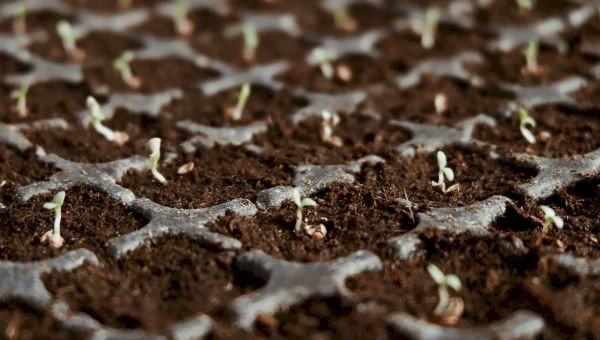The Top 10 Agricultural Chemicals for Modern Farming

Modern agriculture relies heavily on various agricultural chemicals to boost productivity, enhance crop health, and ensure food security for the growing global population. These chemicals are vital in managing pests, improving soil fertility, and protecting crops from diseases. While traditional farming practices emphasize manual labor and organic solutions, today’s modern farming techniques integrate advanced chemical solutions to meet increasing demands efficiently.
The Role of Agricultural Chemicals in Modern Farming
Agricultural chemicals are not just about pest control. They play a multifaceted role in crop production, enhancing plant growth, managing soil health, and optimizing water usage. The efficiency and effectiveness of these chemicals have helped farmers reduce crop losses, manage invasive species, and achieve consistent yields despite changing climate conditions.
Statistics show that global pesticide usage exceeds 4 million metric tons annually, reflecting these products' critical role in agriculture. However, with growing concerns about environmental sustainability, farmers are increasingly adopting integrated pest management practices and eco-friendly solutions alongside traditional chemicals.
1. Glyphosate: The Versatile Herbicide
Glyphosate is one of the most widely used herbicides in agriculture. It is known for its broad-spectrum effectiveness and controls various weeds by inhibiting a specific enzyme pathway essential for plant growth. Farmers prefer glyphosate because it works on annual and perennial weeds, making it an indispensable tool in crop management.
Its versatility extends to various farming systems, including no-till agriculture, where it helps manage weed growth without disturbing the soil. However, concerns about glyphosate resistance in weeds have led to the developing of integrated weed management strategies to maintain its effectiveness.
2. Chlorpyrifos: A Powerful Insecticide
Chlorpyrifos is an organophosphate insecticide widely used to control insect pests in crops like corn, soybeans, and fruit orchards. It disrupts insects' nervous systems, providing rapid and effective pest control. Farmers rely on chlorpyrifos to manage pests resistant to other insecticides, making it a valuable component of integrated pest management programs.
Despite its effectiveness, chlorpyrifos usage has faced regulatory scrutiny in many countries due to environmental and health concerns. As a result, farmers are exploring alternative insecticides and biological control methods for sustainable pest management.
3. Mancozeb: The Protective Fungicide
Fungal diseases can devastate crops, causing significant yield losses. Mancozeb is a popular fungicide that prevents and controls fungal infections in fruits, vegetables, and grains. It creates a protective barrier on plant surfaces, preventing fungal spores from germinating.
Mancozeb’s multi-site mode of action reduces the risk of resistance development, making it effective against many plant pathogens. Farmers often combine mancozeb with other fungicides to enhance disease control and protect crop quality throughout the growing season.
4. Abamectin: An Effective Miticide
Mites are microscopic pests that can cause extensive crop damage by feeding on plant tissues and transmitting diseases. Abamectin is a potent miticide that targets various mite species, providing long-lasting control. It works by affecting the nervous system of mites, leading to paralysis and death.
Farmers use abamectin in greenhouse and field settings, particularly in high-value crops like fruits, vegetables, and ornamental plants. To improve its adhesion to plant surfaces and enhance its effectiveness, many farmers incorporate the NB-80 sticking agent, ensuring the chemical remains active even under challenging weather conditions.
5. Urea: The Essential Nitrogen Fertilizer
Nitrogen is a critical nutrient for plant growth, and urea is one of agriculture's most widely used nitrogen fertilizers. It contains a high concentration of nitrogen (46%) and is easily absorbed by plants, promoting vigorous growth and high yields.
Urea is versatile and can be applied directly to the soil or in foliar sprays. Its efficiency depends on proper application techniques to minimize nitrogen loss through volatilization or leaching, which can impact crop performance and environmental health.
6. Atrazine: A Reliable Herbicide for Weed Control
Atrazine is another powerful herbicide commonly used to control broadleaf weeds and grasses in crops like corn and sugarcane. It works by inhibiting photosynthesis in susceptible plants, effectively suppressing weed growth without harming the crop.
Farmers value atrazine for its residual activity, which provides long-lasting weed control and reduces the need for multiple applications. However, due to its environmental persistence, its use is regulated in many regions to prevent groundwater contamination.
"The health of soil, plant, animal, and man is one and indivisible." – Lady Eve Balfour
This quote underscores the interconnectedness of agricultural practices and environmental health, highlighting the importance of responsible chemical use in farming.
7. Potassium Nitrate: A Dual-Action Fertilizer
Potassium nitrate is a water-soluble fertilizer that provides essential potassium and nitrogen, both crucial for plant development. It enhances fruit quality, improves drought resistance, and supports plant health.
In addition to its role as a fertilizer, potassium nitrate can act as a pest deterrent, reducing susceptibility to certain diseases and pests. Its quick-release properties make it ideal for high-value crops requiring precise nutrient management.
8. Copper Sulfate: A Multi-Purpose Fungicide and Soil Amendment
Copper sulfate serves multiple purposes in agriculture. It is a fungicide, bactericide, and soil amendment. It effectively controls fungal diseases like downy mildew and bacterial infections in fruits, vegetables, and ornamental plants.
Beyond disease control, copper sulfate helps correct copper deficiencies in soils, supporting healthy plant metabolism and enzymatic functions. Its versatility and effectiveness make it a staple in conventional and organic farming systems.
9. Carbaryl: A Broad-Spectrum Insecticide
Carbaryl is a carbamate insecticide known for its broad-spectrum activity against various pests, including beetles, aphids, and caterpillars. It works by inhibiting enzymes essential for nerve function in insects, leading to rapid pest mortality.
Farmers use carbaryl in diverse cropping systems due to its quick action and compatibility with integrated pest management programs. However, like many insecticides, careful application is necessary to minimize its impact on beneficial insects, such as bees and natural predators.
10. Sulfur: A Natural Fungicide and Soil Conditioner
Sulfur is one of the oldest agricultural chemicals, valued for its fungicidal properties and role in soil health management. It effectively controls powdery mildew, rust, and other fungal diseases while also correcting sulfur deficiencies in the soil.
In addition to disease control, sulfur improves soil structure and promotes nutrient availability. Its low toxicity to humans and the environment makes it a preferred choice in organic farming and sustainable agriculture practices.
Frequently Asked Questions (FAQs)
What are agricultural chemicals, and why are they essential in farming?
Agricultural chemicals include herbicides, insecticides, fungicides, miticides, and fertilizers used to protect crops, manage pests, and improve soil fertility. They play a crucial role in enhancing crop yields and ensuring food security.
Are agricultural chemicals safe for the environment?
Agricultural chemicals can be safe when used correctly and according to recommended guidelines. However, improper use or overreliance can lead to environmental issues such as soil degradation, water contamination, and harm to non-target species.
How do farmers reduce the negative impact of agricultural chemicals?
Farmers adopt integrated pest management (IPM), precision agriculture, and eco-friendly alternatives to minimize chemical usage and reduce environmental impact.
Can organic farming be as productive without agricultural chemicals?
Organic farming can be productive, but it often requires more labor and integrated management strategies. While synthetic chemicals are avoided, organic farms still use natural pesticides, fertilizers, and biological controls to maintain crop health.
What’s the difference between herbicides, insecticides, fungicides, and miticides?
- Herbicides control weeds.
- Insecticides target insect pests.
- Fungicides manage fungal diseases.
- Miticides precisely control mite infestations.
A New Perspective on Agricultural Chemicals
Rather than viewing agricultural chemicals solely as tools for pest control or fertilization, consider them part of a broader system supporting sustainable farming. The future of agriculture lies in balancing chemical use with ecological practices, innovative technologies, and a deep respect for the environment.
When used responsibly, agricultural chemicals can coexist with sustainable farming practices, ensuring food security while preserving the health of our planet. As farming continues to evolve, embracing traditional wisdom and modern science will be key to meeting the challenges of tomorrow’s agriculture.
What's Your Reaction?














